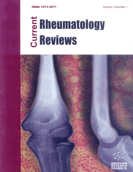
Abstract
Aims: To study the clinical and laboratory findings between patients with primary Antiphospholipid Syndrome (pAPS) with and without LR.
Background: Livedo Reticularis (LR) is a common manifestation of Antiphospholipid Syndrome (APS). Although no previous study evaluated patients with and without LR.
Methods: A transversal study including 66 pAPS patients was performed. Demographical, anthropometric, medication use, antiphospholipid antibodies profile data were evaluated, and LR's clinical and laboratory features. Patients were subdivided into one of two groups: pAPS with LR and pAPS without LR.
Results: Both groups were alike concerning demographics and anthropometrics. Interestingly, the frequency of stroke (28.5 vs. 7.5%, p=0.04), as well as of Sneddon’s syndrome (100 vs. 30.0%, p<0.0001), were higher in pAPS with LR than the other group. Conversely, patients in the pAPS without LR group had more thyroidopathy than those in the pAPS with LR group (80% vs. 50% %, p=0.03).
Conclusion: Patients with pAPS and LR have more stroke and seem to be protected from thyroidopathy. Careful follow-up of these patients is therefore advised.
Keywords: Antiphospholipid syndrome, livedo reticularis, Sneddon’s syndrome, stroke, thrombosis, antiphospholipid antibodies, thyroidopathy.
Graphical Abstract
[http://dx.doi.org/10.1136/bmj.287.6399.1088] [PMID: 6414579]
[PMID: 23348110]
[http://dx.doi.org/10.1177/1534734619896938] [PMID: 31996060]
[http://dx.doi.org/10.1007/s00296-009-1310-z] [PMID: 20012621]
[http://dx.doi.org/10.1097/00005792-199907000-00001] [PMID: 10424203]
[http://dx.doi.org/10.1111/j.1538-7836.2006.01753.x] [PMID: 16420554]
[http://dx.doi.org/10.1001/jama.285.19.2486] [PMID: 11368702]
[http://dx.doi.org/10.1159/000131754] [PMID: 18460895]
[PMID: 15255506]
[http://dx.doi.org/10.1177/0961203306075977] [PMID: 17432102]
[http://dx.doi.org/10.1136/ard.51.2.147] [PMID: 1550393]
[http://dx.doi.org/10.1016/S0190-9622(97)80283-6] [PMID: 9204065]
[PMID: 18300563]
[http://dx.doi.org/10.1016/j.autrev.2006.10.001] [PMID: 17537382]
[http://dx.doi.org/10.1016/j.avsg.2017.10.022] [PMID: 29421414]
[http://dx.doi.org/10.1155/2012/981519] [PMID: 22489254]
[http://dx.doi.org/10.1097/00007611-200406000-00019] [PMID: 15255431]










